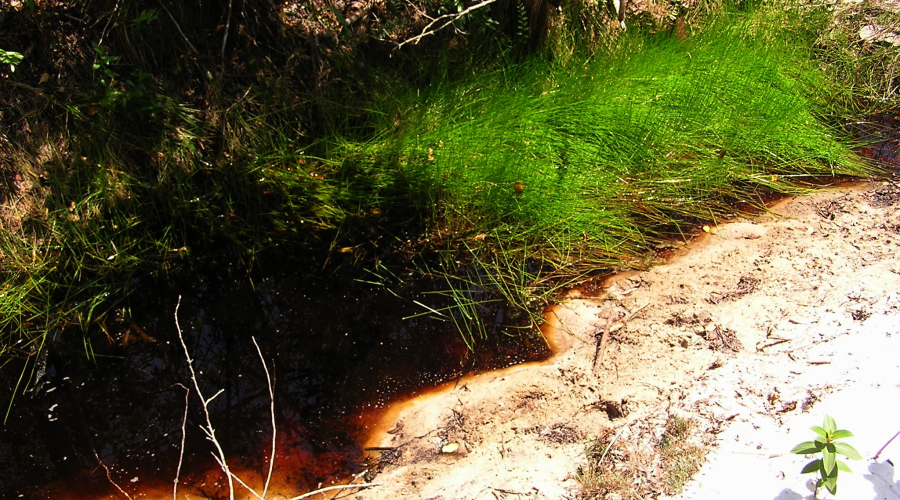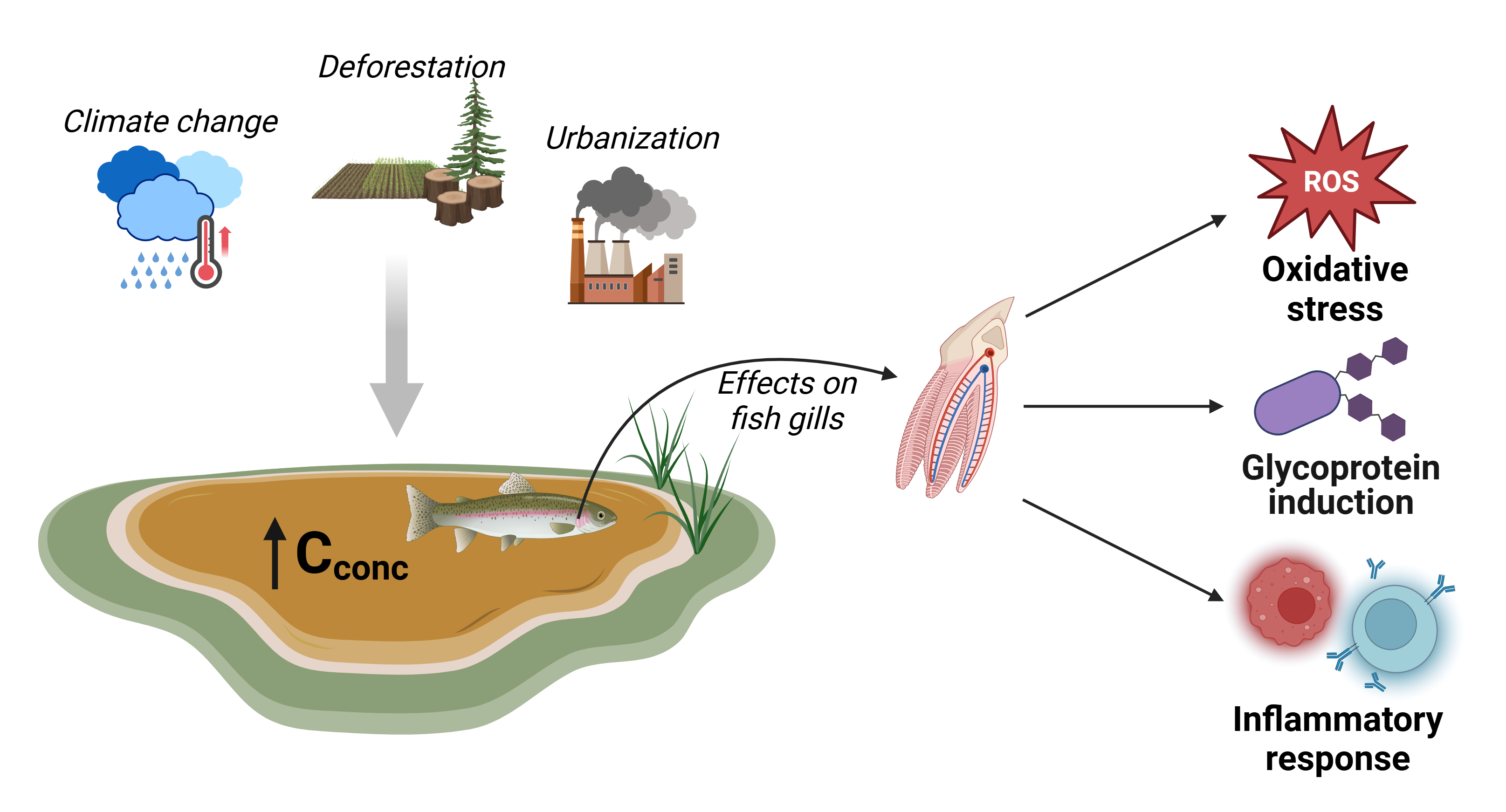Freshwater at Risk: "Browning" as a Hidden Threat to Our Fish

Our waters are turning brown—with far-reaching consequences. Rising concentrations of humic substances put fish gills under stress, triggering inflammatory responses. In the long term, this threatens fish health, resilience, and entire populations.
The outlook for our freshwater systems is murky. Climate change and human activities are driving the accumulation of dissolved organic carbon (DOC) in lakes and rivers, a process known as "browning." This phenomenon leads to increasing water discoloration due to humic-rich compounds. But how does this affect aquatic organisms? In our recent study, we tackled this question by investigating the gill responses of rainbow trout (Oncorhynchus mykiss). To assess the effects of rising fulvic acid concentrations—a low-molecular-weight humic substance—we exposed juvenile rainbow trout to two environmentally relevant concentrations (5 mg C/L and 50 mg C/L) for four weeks. We then examined both histological (structural) changes and transcriptomic responses in the gills.
The picture in introduction shows the Atoleiro Lagoon in Restinga de Jurubatiba National Park (RJ, Brazil), where high concentrations of humic substances have turned the water a deep brown. These dissolved organic carbons (DOC) are washed out from surrounding soils, a process intensified by extreme weather events such as heatwaves and heavy rainfall. This browning effect alters not only water clarity but also impacts aquatic ecosystems and the organisms living within them.
Although the gills showed no major structural changes (yet), we detected clear molecular responses. While the lower fulvic acid concentration had little effect, the higher concentration led to significant changes in gene expression, with 27 genes upregulated and 7 downregulated. Particularly striking was the activation of detoxification pathways (xenobiotic metabolism), increased oxidative stress, and a pro-inflammatory immune response. Our findings reveal that fish actively adapt to these environmental changes and must mobilize protective mechanisms to cope with the exposure.
A key player in this response is the activation of the aryl hydrocarbon receptor (AhR) signaling pathway, which is crucial for detecting and processing environmental toxins. The observed stress responses and immune reactions suggest that elevated fulvic acid levels pose an underestimated threat to freshwater fish.

Due to climate change and increasing land use, more humic substances are being washed from soils into freshwater systems, intensifying the browning effect. A research team led by Dr. Thora Lieke (Leibniz Institute of Freshwater Ecology and Inland Fisheries & University of South Bohemia in České Budějovice), Dr. Verena Jung-Schroers (University of Veterinary Medicine Hannover), and Dr. Alexander Rebl (Leibniz Institute for Farm Animal Biology) has shown that fish gills experience increased oxidative stress under these conditions. This stress leads to heightened production of glycoproteins (mucus-producing proteins) and inflammatory reactions. In the long run, such stress may impair fish health, reduce their resilience to environmental challenges, and even disrupt population dynamics—potentially impacting entire ecosystems (from Lieke et al. (2025), Created with BioRender.com).
Our study highlights that "browning" is more than just a visual change—it has direct, measurable biological effects on fish. Future research should focus on the long-term consequences of this environmental shift to better understand its impact on aquatic ecosystems and develop effective conservation strategies.
Only by fully understanding the causes and effects of browning can we create sustainable solutions to protect our freshwater ecosystems and their inhabitants.
Detailed information can be found in the original article:
Lieke, T., Jung-Schroers, V., Rebl, A., 2025. Freshwater browning as a hidden threat – Transcriptomic responses in fish gills exposed to fulvic acid. Journal of Hazardous Materials 488: 137260. https://doi.org/10.1016/j.jhazmat.2025.137260
Written by: Thora Lieke
